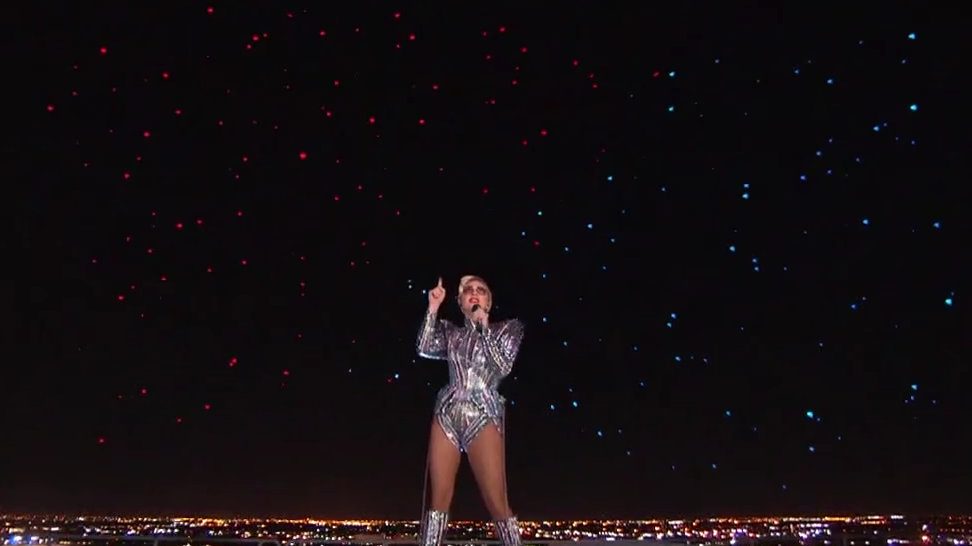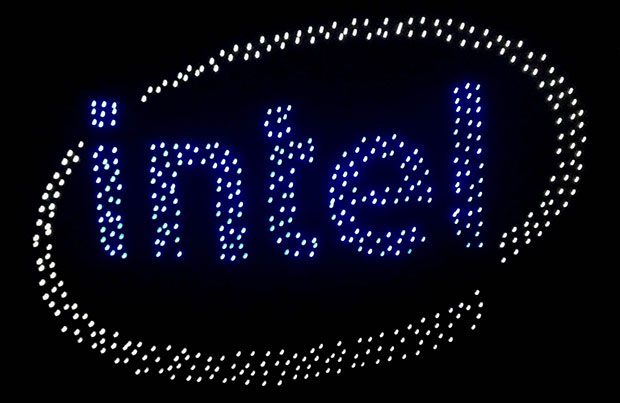SUMMARY
This is AI generated summarization, which may have errors. For context, always refer to the full article.

MANILA, Philippines – Pop star Lady Gaga rocked the Super Bowl LI – one of the biggest sporting events in the US – on Sunday, February 5, with an electrifying halftime show, performing some of her biggest hits infront of millions of people.
Just as she finished the first song in her repertoire, LED lights that appeared to be magically flying formed the US flag behind her. The lights, as it turns out, were being carried by drones: drones that were usually used to take photos and video, were this time the ones worth taking a photo of.
The lights sure looked pretty. But who’s the creative genius behind them? Apparently, the number-crunchers at tech giant Intel were, part of an ongoing experiment to transform drones from individual working units to a swarm that knows how to work together.
Here are some facts you might want to know:
1) This isn’t the first time that the drones were deployed in a performance.
Before the Lady Gaga performance, the Shooting Stars, as they are called, had another high-profile performance. It started in late 2016 when the drones appeared at a 3-week show in Disney World in the US. The drones were part of the theme park’s holiday program, and were seen forming Christmas-themed symbols such as Christmas trees and doves. Intel partnered with the entertainment titan in order to showcase the technology they were working on. Take a look:
2) They are controlled by a single computer
One computer controls the flight and the formation of the said drones. Techcrunch, which got a close look at the Shooting Stars before they were deployed at Disney, said that the software is a crucial cog in the program. The drones aren’t smart by themselves and aren’t equipped to detect collissions. Instead, the software figures out and pre-programs routes that will prevent collisions and successfully complete the desired formations.
The computer also checks battery levels and GPS signal strength. When one goes down, the Shooting Star system ensures that there are reserve drones ready to take flight and take over its fallen comrade’s spot.
3) Intel has been developing the technology for 2 years now

Partnering with technology researchers and artists alike, the tech giant seeks to apply this drone fleet technology beyond entertainment purposes. Working like a swarm, it is hoped that the drones will be able to accomplish bigger tasks in areas such as search and rescue or inspecting areas hazardous to humans, to name a few. In Intel’s imagination, no drone is an island.
4) Currently, up to 10,000 drones can be controlled at one time
The technology, given enough time to develop further, might just be able to accomplish really great things. The underlying technology is said to be “limitless in scale” Intel told Techcrunch, with the current version of the software able to control 10,000 flying devices at a time.
The claim has not been demonstrated yet though, with Intel’s record for number of Shooting Star drones flown in unison standing at 500. The Guinness World Record-setting performance (officially titled “Most Unmanned Aerial Vehicles Airborne Simultaneously”), held in Germany, can be seen in the embedded video below.
5) They’re easy to transport and assemble
They’re about as heavy as a volleyball with a housing made of Styrofoam, and can be assembled in 15 minutes, says Techcrunch. The multicolored LED light is located at the bottom of the drone. Specifically, each drone is 8 ounces. The drones are designed with soft housing in order to lessen the physical impact in case they bump into one another.
The onboard LED is able to come up with 4 billion color combinations, says Wired.
6) The Superbowl performance is the biggest show yet for the Shooting Stars
The Stars performed in front of an estimated global audience of 160 million people. Another big feat is that the Shooting Star were the only drones in attendance that night. The US Federal Aviation Administration (FAA) forbids drones within the area; Intel and the Superbowl creative team had to secure permits to make what may have been a landmark moment for drones. – Rappler.com
Add a comment
How does this make you feel?
There are no comments yet. Add your comment to start the conversation.